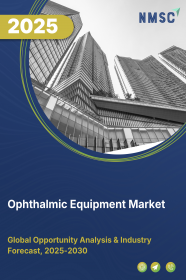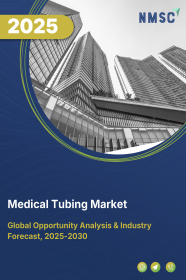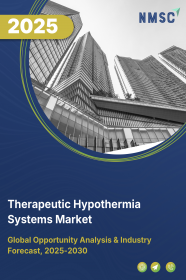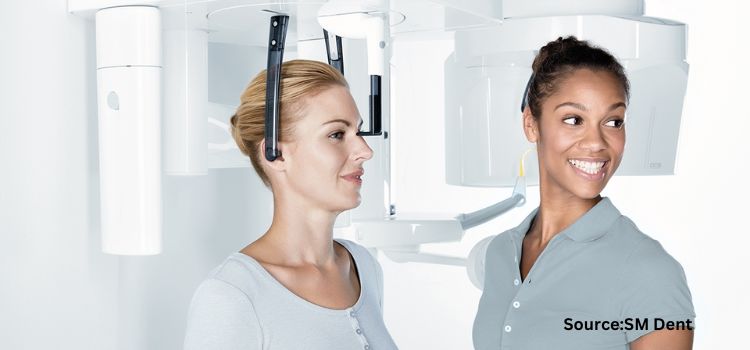
Ophthalmic Equipment Market by Product (Diagnostic & Monitoring Devices, Surgical Devices, Ophthalmic Accessories and Consumables and Others), by Application (Cataract, Glaucoma, Refractive Error, Vitreoretinal Disorders, and Others) and by End Users (Hospital, Ophthalmic Clinic, Ambulatory Surgical Centers, Optical retinal Centers and Others)–Global Opportunity Analysis and Industry Forecast 2025-2030
US Tariff Impact on Ophthalmic Equipment Market
Trump Tariffs Are Reshaping Global Business
Ophthalmic Equipment Market Overview
The global Ophthalmic Equipment Market size was valued at USD 68.97 billion in 2024, and is expected to be valued at USD 72.33 billion by the end of 2025. The industry is projected to grow further, hitting USD 91.72 billion by 2030, with a CAGR of 4.9% between 2025 and 2030.
The global ophthalmic equipment market is experiencing significant evolution, driven by factors such as the increasing demand for eye care among the population, the efficiency and reliability introduced by the ongoing technological revolution, and a growing proactive approach to vision care. These drivers collectively contribute to the market's overall growth potential and expanding industry size by addressing the needs of an aging population, enhancing the quality of care, and encouraging regular eye health management.
However, the market faces restraints, including the high costs associated with the implementation of advanced ophthalmic technologies, which can limit adoption, particularly in cost-sensitive regions and smaller healthcare facilities. Despite this challenge, various opportunities for industry players lie in emerging markets, which offer fertile ground for expansion and create future growth opportunities due to their large patient bases and currently low penetration of modern ophthalmic equipment. This shift has the potential to significantly broaden market reach, foster innovation, and expand the overall market size.
The Increasing Demand for Eye Care Among the Population Fuels the Growth of the Market
The increasing global population entering older age brackets, and the demographic shift is a significant factor for the ophthalmic equipment market growth. As individuals age, they become more susceptible to various eye conditions such as cataracts, glaucoma, and age-related macular degeneration. The World Health Organization stated in 2023 that, almost 1 in 6 individuals is expected to be 60 years old or more by 2030. This indicates a sustained and growing demand for ophthalmic lenses and related equipment. This surge in the prevalence of age-related eye disorders directly translates to a greater need for diagnostic and surgical ophthalmic equipment, thereby expanding the market size and presenting substantial growth potential for manufacturers and suppliers.
Technological Revolution Boost the Growth of the Market
The ophthalmic equipment industry is in a constant state of evolution, driven by relentless technological advancements. This continuous innovation is resulting in the development of more efficient and reliable equipment for diagnosing and managing eye diseases. For instance, the introduction of femtosecond lasers has shortened surgical times and improved operative outcomes in ophthalmic procedures. Advanced imaging techniques like high-definition optical coherence tomography (OCT) are enhancing the accuracy of diagnoses and the monitoring of retinal diseases. Moreover, companies are focusing on creating more user-friendly and portable devices, which can streamline clinical workflows and improve patient care. The development of such cutting-edge tools not only improves the precision and effectiveness of eye care but also contributes significantly to the ophthalmic equipment market trends by offering better solutions to healthcare professionals.
Global Awareness Regarding the Importance of Eye Health Further Boosts the Market Demand
There is a growing global awareness regarding the importance of proactive eye health management and the prevention of vision loss. This increasing consciousness among the general population is leading to more frequent eye check-ups and a greater demand for diagnostic equipment that can detect eye conditions in their early stages. For example, the rise in screen time due to the frequent use of smartphones and laptops has led to concerns about digital eye strain, prompting a demand for solutions like blue-light blocking glasses. Furthermore, as awareness about conditions like myopia increases, so does the demand for equipment used in diagnosis and management. This proactive approach to eye care fuels the demand for a wide range of ophthalmic equipment, from diagnostic tools like tonometer and fundus cameras to preventative solutions, thereby contributing to the sustained growth of the ophthalmic equipment market and its overall industry size.
High Costs Regarding the Implementation Hinder the Growth of the Market
One of the significant challenges confronting the ophthalmic equipment market is the high cost associated with advanced diagnostic and surgical instruments. This cost restraint can limit the adoption of cutting-edge technologies, particularly in smaller clinics or developing countries where resources may be more limited. While technological advancements are crucial for improving patient outcomes, manufacturers face the ongoing challenge of balancing innovation with affordability to ensure wider accessibility to these vital tools. The market growth can be hindered if the cost of advanced equipment remains prohibitive for a significant portion of potential end-users.
Rising Demand for Advanced Diagnostic and Surgical Solutions Creates Future Growth Opportunities for the Market
The ophthalmic equipment market trends stands to gain significantly from the growing demand for advanced diagnostic and surgical technologies. Increasing prevalence of vision disorders, such as cataracts, glaucoma, and age-related macular degeneration, is pushing eye care providers to adopt high-precision instruments for early detection and effective treatment. In addition, rising awareness of routine eye exams, coupled with the global increase in elderly populations, continues to create a steady stream of patients requiring vision care. Innovations in imaging technologies, minimally invasive surgical tools, and digital integration for real-time diagnostics are further shaping the future of ophthalmic care, offering manufacturers new avenues for product development and market expansion.
Market Segmentation and Scope of the Study
The ophthalmic equipment industry report is segmented on the basis of product, application, end users, and region. On the basis of product type, the market is divided into diagnostic and monitoring devices, surgical devices, vision care products, and ophthalmic accessories and consumables. Based on diagnostic and monitoring devices, the market is further segmented into optical coherence tomography (OCT) scanners, fundus cameras, tonometers, autorefractors/keratometers, slit lamps, ophthalmoscopes, perimeters/visual field analyzers, pachymeters, corneal topography systems, and others. On the basis of surgical devices, the market is categorized into cataract surgery devices, vitreoretinal surgery devices, refractive surgery devices, glaucoma surgery devices, and surgical microscopes. Cataract surgery devices are further bifurcated into intraocular lenses (IOLs), phacoemulsification systems, and ophthalmic viscoelastic devices (OVDs). Vitreoretinal surgery devices include vitrectomy machines, vitreoretinal packs, and backflush instruments. Refractive surgery devices comprise femtosecond lasers and excimer lasers, while glaucoma surgery devices consist of microinvasive glaucoma surgery (MIGS) devices and glaucoma drainage devices. Furthermore, on the basis of vision care products, the market is bifurcated into contact lenses, spectacle lenses, and lens cleaning solutions. Contact lenses are further segmented into soft contact lenses and rigid gas permeable (RGP) lenses. The ophthalmic accessories and consumables segment includes surgical drapes and packs, disposable instruments, and irrigation/aspiration systems. On the basis of application, the market is segmented into cataract, glaucoma, refractive errors, vitreoretinal disorders, and others. Based on technology, the market is bifurcated into laser technology, ultrasound technology, optical imaging and diagnostics, 3D printing in ophthalmology, and others. On the basis of end users, the market is divided into hospitals, ophthalmology clinics, ambulatory surgical centers (ASCs), optical retail centers, research and academic institutions, and others. Regional breakdown and analysis of each of the aforesaid segments include regions comprising North America, Europe, Asia-Pacific, and Rest of the World (RoW).
Geographical Analysis
North America dominates the global ophthalmic equipment market share. Its leadership can be largely attributed to the active strides in technology and innovation, with cutting-edge ophthalmic tools and technologies being developed and introduced regularly. The latest report of the Vision Council report reveals that around 60% of American men and 65% of American women reported symptoms of CVS. Substantial investments in healthcare infrastructure also ensure the availability and accessibility of advanced ocular health solutions in this region. For example, in November 2023 in Canada, Alcon launched Systane iLux2, a healing setup designed specifically for dry eye checkup Furthermore, a heightened awareness and prevalence of eye-related disorders within North America contribute significantly to the market's nourishment, as a considerable portion of the population requires ophthalmic care.
Europe is also demonstrating robust growth in the vision care market. Europe is identified as a region with rapidly increasing growth. This growth is partly fuelled by an increasing awareness of preventative care for vision loss and a wider variety of surgical solutions. The development of new topically administered drugs to treat ophthalmic diseases and eye disorders is also expected to dramatically increase the market size in Europe.
The Asia-Pacific region holds the largest market share in the global ophthalmic equipment market and is projected to continue its steady growth. This region, particularly countries like China and India, offers prospective growth possibilities for ophthalmic device makers due to their large population bases. According to a recent publication of World Economic Forum, Japan is expected to touch around 36.23 million individuals belonging to the age group of 65 years and above by 2030. Limited access to modern ophthalmic devices in many parts of Asia-Pacific presents a significant opportunity for market expansion.
The Rest of the World, encompassing regions beyond North America, Europe, and Asia-Pacific, also presents untapped potential for the ophthalmic equipment industry. Developing countries within this broader category have large patient bases and limited access to modern ophthalmic devices, indicating substantial growth potential as healthcare infrastructure improves and awareness increases. The lower production costs in countries like India also allow for the possibility of serving price-conscious markets in Asia, Africa, and other regions.
Key Players and Strategies in the Global Ophthalmic Equipment Industry
The global ophthalmic equipment industry is marked by dynamic strategies adopted by key players to maintain and expand their market share in a continuously evolving landscape. Recent developments showcase a strong emphasis on technological advancements, with companies like ZEISS highlighting the milestone of over 10 million treatments using their SMILE and SMILE pro lenticule extraction solutions.
Furthermore, the launch of innovative diagnostic tools like Huvitz's HBM-1 optical biometer for cataract surgery indicates a focus on expanding product portfolios to address crucial needs. However, these players face challenges such as the exorbitant cost of cutting-edge instruments like femtosecond lasers, which can limit broader adoption. Navigating complex and varying regulatory landscapes across different regions also remains a significant hurdle.
Despite these restraints, substantial opportunities lie in catering to the growing demand in developing countries with limited access to modern ophthalmic devices and leveraging the increasing integration of Artificial Intelligence (AI) for enhanced diagnostics and treatment planning. The overall market size is projected for steady growth, making strategic innovation and market penetration key priorities for industry leaders.
Key Benefits
-
The report provides quantitative analysis and estimations of the ophthalmic equipment market from 2025 to 2030, which assists in identifying the prevailing market opportunities.
-
The study comprises a deep dive analysis of the ophthalmic equipment market including the current and future trends to depict prevalent investment pockets in the market.
-
Information related to key drivers, restraints, and opportunities and their impact on the ophthalmic equipment market is provided in the report.
-
Competitive analysis of the players, along with their market share is provided in the report.
-
SWOT analysis and Porters Five Forces model is elaborated in the study.
-
Value chain analysis in the market study provides a clear picture of roles of stakeholders.
Ophthalmic Equipment Market Key Segments
By Product
-
Diagnostic and Monitoring Devices
-
Optical Coherence Tomography (OCT) Scanners
-
Fundus Cameras
-
Tonometers
-
Autorefractors/Keratometers
-
Slit Lamps
-
Ophthalmoscopes
-
Perimeters/Visual Field Analyzers
-
Pachymeters
-
Corneal Topography Systems
-
Others
-
-
Surgical Devices
-
Cataract Surgery Devices
-
Intraocular Lenses (IOLs)
-
Phacoemulsification Systems
-
Ophthalmic Viscoelastic Devices (OVDs)
-
-
Vitreoretinal Surgery Devices
-
Vitrectomy Machines
-
Vitreoretinal Packs
-
Backflush Instruments
-
-
Refractive Surgery Devices
-
Femtosecond Lasers
-
Excimer Lasers
-
-
Glaucoma Surgery Devices
-
Microinvasive Glaucoma Surgery (MIGS) Devices
-
Glaucoma Drainage Devices
-
-
Surgical Microscopes
-
-
Vision Care Products
-
Contact Lenses
-
Soft Contact Lenses
-
Rigid Gas Permeable (RGP) Lenses
-
-
Spectacle Lenses
-
Lens Cleaning Solutions
-
-
Ophthalmic Accessories and Consumables
-
Surgical Drapes and Packs
-
Disposable Instruments
-
Irrigation/Aspiration Systems
-
By Application
-
Cataract
-
Glaucoma
-
Refractive Errors
-
Vitreoretinal Disorders
-
Others
By End-Users
-
Hospitals
-
Ophthalmology Clinics
-
Ambulatory Surgical Centers (ASCs)
-
Optical Retail Centers
-
Others
By Region
-
North America
-
The U.S.
-
Canada
-
Mexico
-
-
Europe
-
The UK
-
Germany
-
France
-
Italy
-
Spain
-
Denmark
-
Netherlands
-
Finland
-
Sweden
-
Norway
-
Russia
-
Rest of Europe
-
-
Asia Pacific
-
China
-
Japan
-
India
-
South Korea
-
Australia
-
Indonesia
-
Singapore
-
Taiwan
-
Thailand
-
Rest of Asia Pacific
-
-
RoW
-
Latin America
-
Middle East
-
Africa
-
Key Players
-
Alcon Inc
-
Bausch + Lomb
-
ZEISS Group
-
Mehra Eyetech Pvt. Ltd.
-
Essilor International
-
Haag-Streit AG
-
Nidek Co., Ltd.
-
Heidelberg Engineering Inc.
-
Canon Medical System
-
AbbVie Inc.
-
Ziemer Ophthalmic Systems AG
-
Johnson & Johnson
-
Lumenis Be Ltd.
-
Lumibird Medical
-
Appasamy Associates Private Limited
REPORT SCOPE AND SEGMENTATION:
|
Parameters |
Details |
|
Market Size in 2024 |
USD 68.97 billion |
|
Revenue Forecast in 2030 |
USD 91.72 billion |
|
Growth Rate |
CAGR of 4.9% from 2025 to 2030 |
|
Analysis Period |
2024–2030 |
|
Base Year Considered |
2024 |
|
Forecast Period |
2025–2030 |
|
Market Size Estimation |
Billion (USD) |
|
Growth Factors |
|
|
Countries Covered |
28 |
|
Companies Profiled |
15 |
|
Market Share |
Available for 10 companies |
|
Customization Scope |
Free customization (equivalent up to 80 working hours of analysts) after purchase. Addition or alteration to country, regional, and segment scope. |
|
Pricing and Purchase Options |
Avail customized purchase options to meet your exact research needs. |

















 Speak to Our Analyst
Speak to Our Analyst





















